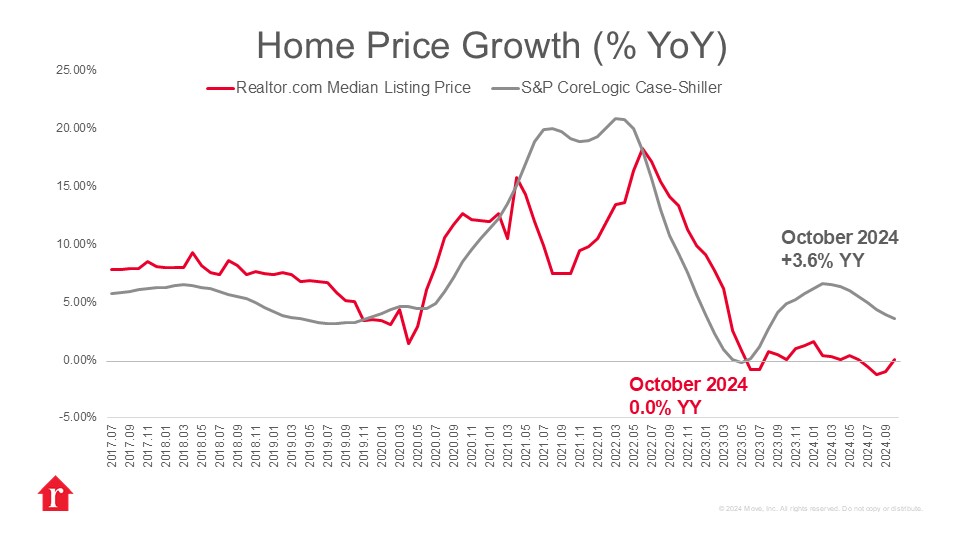What does the data show?
The S&P CoreLogic Case-Shiller Index picked up 3.9% through February, down from 4.1% the previous month. The 10- and 20-city indices also posted gains of 5.2% and 4.5%, respectively, slowing from 5.4% and 4.7% the previous month. This month’s release covers home sales in December, January and February, a period in which buyers enjoyed growing inventory and easing mortgage rates. After peaking at 7.04% in January, mortgage rates eased to 6.76% by the end of February. This period of rate relief was not quite enough to spur many sidelined buyers into action. Sale prices continued to climb however, as higher-priced homes sold to less rate-sensitive buyers.
How did trends vary by region?
The housing market varies significantly by region. The affordable Midwest and the less affordable Northeast housing markets continue to thrive as the well-supplied South and West regions show signs of cooling. New York City led with a 7.7% annual gain in February, the biggest among the 20 cities, followed by Chicago (+7.0%) and Cleveland (+6.6%). Tampa saw prices fall in February with a 1.5% decline, the lowest return of the cities.
Popular Midwest destinations attract buyers looking for more affordability, which has kept upward pressure on home prices. Strong demand and challenging selling conditions have kept inventory levels in the Northeast from recovering, driving home prices higher. The recently released State Report Cards reveal that much of the Northeast is unaffordable and that new construction activity is struggling to keep up with demand, worsening the existing home supply gap.
What is ahead for housing?
The spring selling season is here, and inventory is well above year-ago levels, offering buyers plenty of options in many areas. However, high housing costs and widespread economic uncertainty have curbed buyer enthusiasm. Recent data shows that concerns about job security have increased, which could make both buyers and sellers more hesitant to enter the housing market until the outlook for the economy and job market becomes clearer.

